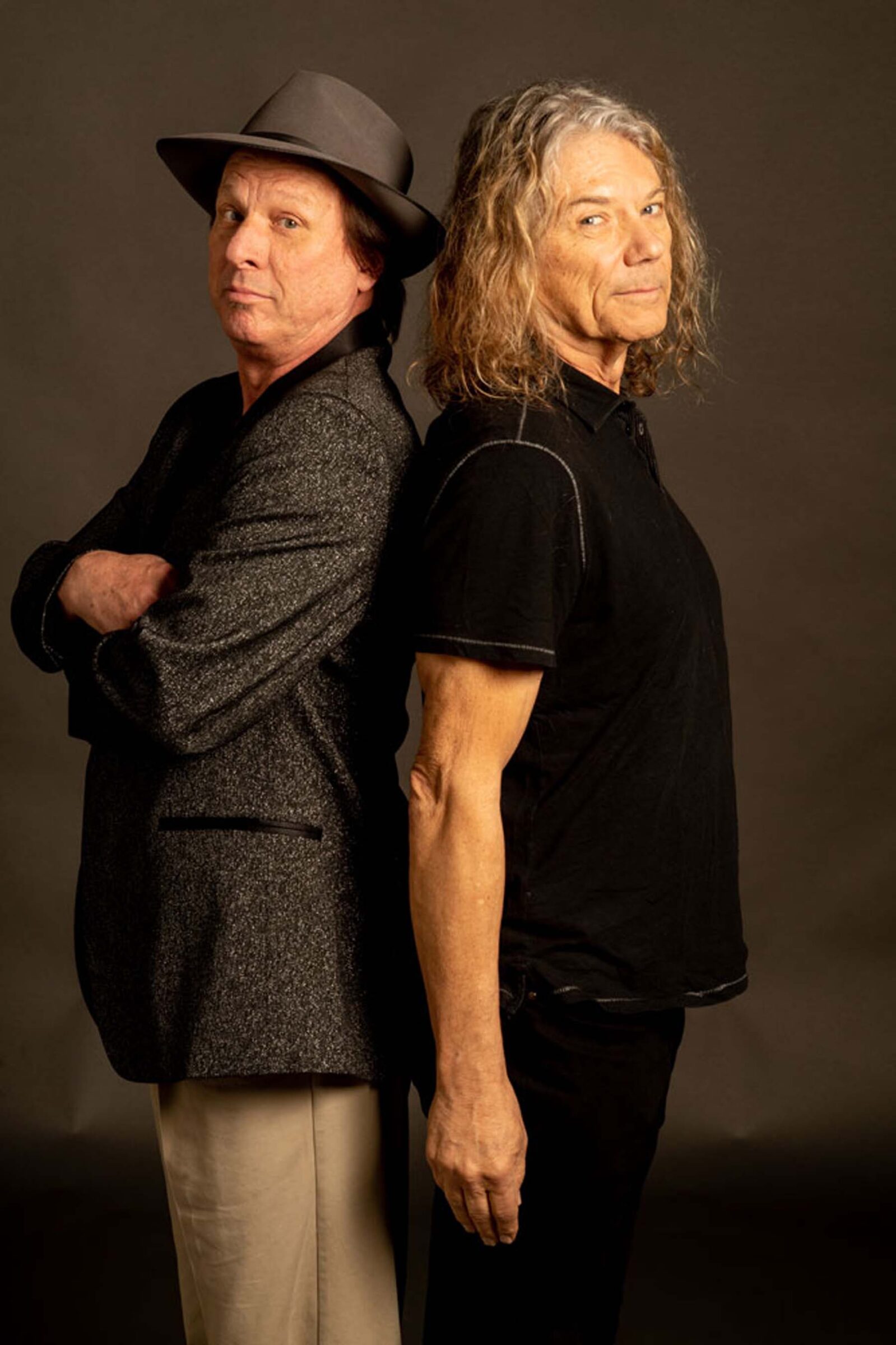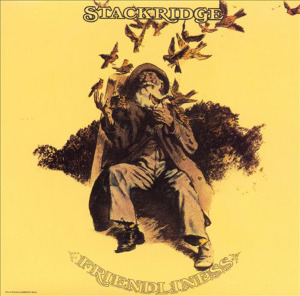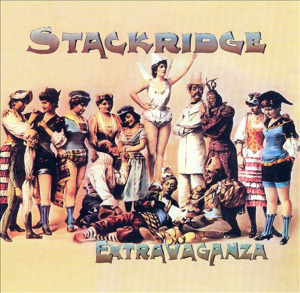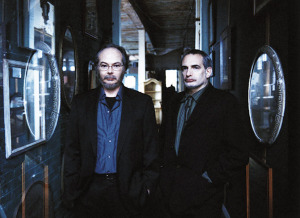(February 22, 2023; THE FACTORY IN THE DISTRICT, Chesterfield MO)

I have always been a huge Talking Heads fan, right from the beginning of their CBGB’s/weird art-punk days. I listened obsessively to their debut album when I was working at a record store, was thrilled beyond measure when my musical and creative hero Brian Eno started working with them on their second album MORE SONGS ABOUT BUILDINGS AND FOOD, and was literally ecstatic by the transcendent weirdness of their artistic peak with FEAR OF MUSIC and the colossal REMAIN IN LIGHT. I could write pages about how much I adored those two albums, but… this is a concert review, so I gotta be disciplined here. But I’m just stating unequivocally how much David Byrne, Chris Frantz, Tina Weymouth and Jerry Harrison have meant to me as a music fan and still do. I saw the Heads twice in their heyday but never got to see the REMAIN IN LIGHT stuff performed live, until Harrison and Adrian Belew put together this amazing touring show with former members of Turkuaz, now renamed as Cool Cool Cool. I could not pass this show up, and although I had some personal circumstances that were daunting, I soon found myself venturing to the Factory in far St. Louis County for the first time. I was eager to see how these performers were going to make up for the lack of vocalist David Byrne and killer rhythm section Chris and Tina, one of the best EVER.

Cool Cool Cool opened the show with their expansive ensemble rhythmic funk, impressing with sterling musicianship that include a three-piece horn section, two percussionists and the delightful high-energy vocals of Sammi Garett and Shira Elias. It was a pleasant danceable mix, and the audience responded with enthusiasm. But there was definitely a feeling of anticipation in the air about what everyone had come here to see. Jerry Harrison had planned a “REMAIN IN LIGHT” celebration since before the pandemic, when his plans with Belew were derailed by an industry-halting nightmare. Once things returned to relative normalcy, the two legends revived their inspired plans, and you could be forgiven by perhaps thinking that doing something like this without Heads leader David Byrne might be a daunting proposition. But two key factors made this an absolutely thrilling show. First, Harrison and Belew were aiming to recreate some of the feeling of the legendary STOP MAKING SENSE tour that Jonathan Demme captured so amazingly in his film, where an extended cast of players could add layers and layers of sonic details to the blend both vocally and rhythmically… as well as the notable 1980 concert in Rome that a huge audience blissed out to and that the Heads themselves have pointed out as a career high point (Belew was part of that show, and it’s still available to see on YouTube). Secondly, the smart decision was made to have different musicians taking lead vocals depending on the song and who sounded best on it. Hence Belew sang lead on “Psycho Killer,” a surprising “Drugs” and a genuinely riveting “Life During Wartime,” which gained obvious rich thematic resonance due to the savage ongoing war in Ukraine. Harrison sang lead effectively on “Houses in Motion,” which was fab. But maybe the biggest surprise of the night was the strength of the vocals by “Cool” member (and baritone sax man-handler) Josh Schwartz, a tall bespectacled fellow at stage right who didn’t “Byrne it” so much on lead vocals as he “interpreted energetically” on songs like “Crosseyed and Painless,” “Born Under Punches” and the utterly transcendent classic “Once In a Lifetime.” These three songs transported me somewhere I haven’t been in years: I wrote in my notes “shivers of joy,” as such were traveling up my spine especially on the latter two songs. Besides the effectiveness of the insistent rhythms we were treated to, I cannot say enough about the hypnotic backing vocals of Sammi Garett and Shira Elias on these and other songs here. Whether it was their repeated “I’m STILL waiting” on “Crosseyed…, ” or the unbelievably transfixing phrases like “All I want is to breathe,” and “and the heat goes on” in concert high point “Born Under Punches” and the insistent “letting the days go by” and various water references in “OIAL,” these two ladies absolutely killed it musically. As a fan of backing vocals and repeated refrains and a recording artist myself lately, I just LOVE this aspect of music, and part of the true GENIUS of the album REMAIN IN LIGHT is how much of that kind of thing listeners were treated to, courtesy of the Talking Heads’ evolved aesthetic by that point and the crazy machinations of producer Eno in the studio. The gals also had their bigger than usual moment on “Slippery People,” a gospel-flavored workout in which they essentially sing lead on much of the song. Truly wonderful. It was also wonderful to hear “I Zimbra” from the FEAR OF MUSIC album, another chance for Schwartz to take the lead at the mic, even though this is certainly a group-based number, with its singular challenge of chanting made-up lyrics over tribal-sounding sonics.


Okay, we gotta pause and single out Adrian Belew here. Holy effing shit. This guy is one of the most distinctive and trailblazing guitarists in the history of rock, and his leads are very much present throughout REMAIN IN LIGHT. Everything you were probably hoping to hear him do in this concert was firmly on display. I was writing down phrases like “great piercing lead by AB” in my notes on “Crosseyed and Painless,” “Houses in Motion” and others as fast as I could scribble, noting the smile on Belew’s face so much of the time, which I could see through my binoculars. Belew nodded to his long tenure with King Crimson by performing the band’s “Thela Hun Ginjeet” and sidling up to the fetchingly attired, chorus-sharing Garett, who was clearly having a ball all night. So was I, for sure! I was a happy man to be able to experience such tunes as “Cities” and my mega-favorite “Once In a Lifetime” and pretend I was approximating the joy any true fan must have felt experiencing the Heads at their performing peak. As for Harrison, he did a great keyboard solo on his own tune “Rev It Up” and served up the “quirk” on “Slippery People” and others. Harrison doesn’t always get credit for the delightful flavoring his insistent repeated keyboard parts added to the Heads’ oeuvre, and certainly classics like “Once In a Lifetime” wouldn’t have attained their legendary status without his work.

A spirited “Take Me To the River” found the whole ensemble wringing every bit of iconic juice out of a song that we all know extremely well, with the ladies adding drama by repeating the two-line refrain over and over, singing it more and more quietly (which the audience was noticeably riveted by) and then kicking up the volume at the end for a glorious climax. On both the floor and the balcony, contingents of people were dancing happily. There HAD to be an encore, of course, and Belew said “Are you sure?” to the audience when the ensemble was summoned for their expected callback. I was CERTAIN the song would be “The Great Curve,” the only RIL classic not already played, and I was right. It was thrilling, powerful and very much the rhythmic and danceable classic of its original incarnation. What an ensemble! What a show! Many people have listed REMAIN IN LIGHT as one of their “ten favorite albums of all time,” myself included. I was thinking about that in the waning moments of the concert, WHY that album made such an impact. Was it the reinvented afrobeat sound for a modern audience? Talking Heads leaping beyond their quirky art rock to another dimension? The timeliness of that album and its hit “Once In a Lifetime” finding a fresh audience at the dawn of MTV? Sure, all of that. But my own phrase is “transfixing weirdness,” captured on the album like few others at the time. Hearing Harrison, Belew and the very inspired members of Cool Cool Cool doing powerful justice to a beloved album which is unlike anything else ever released… weird, life-affirming, body-moving and consistently challenging and mysterious… made me very happy. Kudos to these immensely talented musicians for coming up with a great idea, and then carrying it off so thrillingly.























































